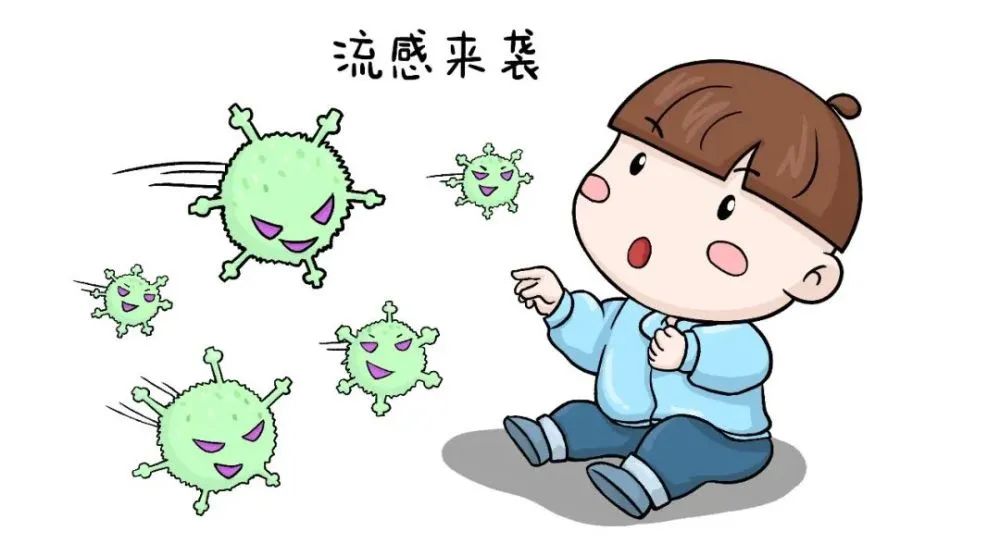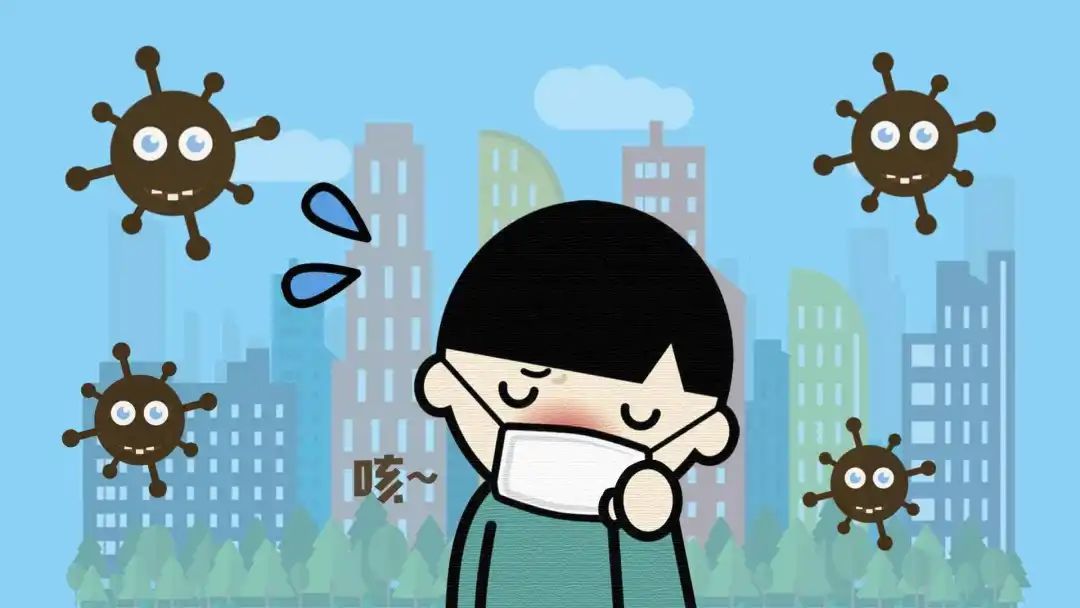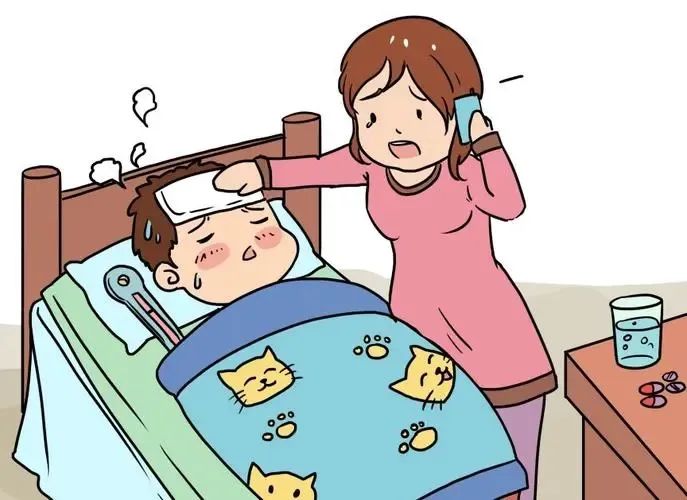Guangzhou has entered the high incidence of influenza in spring! You need to pay attention →
According to Guangzhou CDC
Recent monitoring data show that
For nearly a month,
The level of influenza activity, mainly influenza A, continues to rise.
The momentum is rapid.
Guangzhou has entered the high incidence of influenza in spring.
What are the symptoms of influenza?
How will it spread?
How to prevent and treat it scientifically?
How to tell whether it is the flu or the common cold?
……
One article will take you all to know.
▽
What is the flu?

△ Xu Yi, Director of Internal Medicine Department and Director of Infectious Diseases Department of Guangzhou Women and Children Medical Center
Xu Yi, director of internal medicine department and director of infectious diseases department of Guangzhou Women and Children Medical Center, said that influenza, referred to as influenza, is an acute respiratory disease caused by influenza virus and belongs to Class C infectious disease. Influenza A (subtype A H1N1 and subtype A H3N2) and influenza B (strain Yamagata and strain Victoria) are the most prevalent seasonal viruses in the population. Influenza A virus is more likely to spread rapidly among people, and many large-scale outbreaks of influenza in history are related to influenza A virus. Recently, the rising level of influenza activity in many places in China is also caused by the subtype of influenza A (H1N1).
In the past three years, we have taken non-drug interventions, such as wearing masks and limiting social distance, which have effectively curbed the spread of the COVID-19 epidemic. At the same time, it also reduces the exposure to influenza in the population, resulting in the decline of pre-existing immunity in the population, which has a certain risk of influenza epidemic. In the south, there may be a single annual influenza peak from April to June every year.

In the face of influenza virus, we have two sharp weapons to "defeat the enemy": special antiviral drugs and influenza vaccine. As long as you pay attention to personal precautions and maintain good hygiene habits, the possibility of a persistent influenza pandemic is already small, so you don’t have to be nervous and afraid.
How does the flu spread?
Influenza patients and recessive infections are the main sources of seasonal influenza infection. Influenza is mainly transmitted by air droplets, and it can also be transmitted by direct or indirect contact with mucous membranes such as mouth, nose and eyes. It can also spread in the form of aerosol in a crowded, closed or poorly ventilated room.

What are the main symptoms of influenza?
The onset of influenza is urgent, and most of them are self-limited. Mainly with fever, headache, myalgia and general malaise; The body temperature can reach 39~40℃, which is often accompanied by systemic symptoms such as muscle and joint pain, fatigue and loss of appetite. Often sore throat, dry cough, nasal congestion, runny nose, discomfort behind the sternum, facial flushing, conjunctival congestion and so on. Some patients have mild or no symptoms. Mild flu is often similar to the common cold, but flu fever and systemic symptoms are more obvious.

How to distinguish
H1N1 and the common cold?

The child has flu-related symptoms
What circumstances need to be sent to the doctor in time?
1. Persistent high fever > 3 days, accompanied by severe cough, expectoration of pus, blood sputum, or chest pain;
2. Breathing frequency is fast, breathing is difficult, and the lips are cyanotic;
3. Slow response, lethargy, restlessness, etc.;
4. Severe vomiting, diarrhea, dehydration such as less urine and less tears;
5. pneumonia;
6. When the original underlying disease is obviously aggravated.
It should be emphasized that younger children must see a doctor when they have persistent high fever or ultra-high fever in the first 1-2 days of illness, and the antipyretic drugs and physical cooling effects are not obvious, or when they have convulsions.

How to treat the flu?
Generally, children are advised to stay at home and keep the room ventilated after symptoms appear. Get enough rest, drink plenty of water, and the diet should be easy to digest and nutritious. Minimize contact with others and avoid infection. The focus of treatment is to relieve flu-like symptoms such as fever and cough, and the patient’s condition should be closely observed.
Children under 5 years old or obese are more likely to have serious complications, so antiviral treatment under the guidance of a doctor as soon as possible can alleviate flu symptoms, shorten the course of flu and reduce the mortality rate of severe flu.
Remember: antibiotics and hormones are ineffective against influenza virus. )
The flu is coming
How to prevent it scientifically?
1. Personal protection: During the flu season, try to avoid going to crowded places and contacting people with respiratory symptoms; If the child has respiratory symptoms, he should rest at home, conduct health observation, and enter the park and attend classes without illness; Maintain good hygiene habits such as hand hygiene and cough etiquette.
2. Maintain environmental sanitation: keep the residence clean and ventilated, and regularly clean and disinfect key parts such as door handles and handrails.
3. Strengthen the health monitoring of collective units: schools and kindergartens should strengthen morning and afternoon inspections and full-day observation; Children with flu-like symptoms should rest at home to reduce the spread of the disease.
4. Vaccination against influenza is the first line of defense against influenza, and children over 6 months old can have protective effect after vaccination according to recommended procedures. The peak time and duration of influenza activity vary from place to place every year. In order to ensure that the recipients can get immune protection before the flu season, it is recommended to vaccinate as soon as the vaccine is available.

Fingertips a little.
Learn something new about Baiyun
Click on the card
Enter the "Guangzhou Baiyun" WeChat applet
Original title: "Guangzhou has entered the high incidence of influenza in spring! You need to pay attention → "
Read the original text